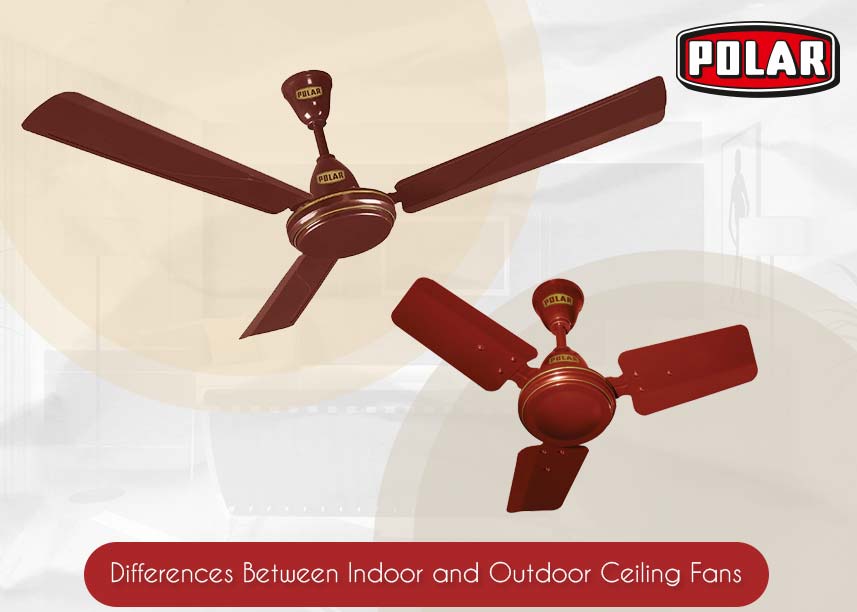 Fans are an important part of our lives and there are two types of ceiling fans- indoor and outdoor. In this blog, we will learn about their differences.
Fans are an important part of our lives and there are two types of ceiling fans- indoor and outdoor. In this blog, we will learn about their differences.
Ceiling fans are an essential part of our lives. Especially, in a tropical country like India where the weather is humid almost throughout the year, it is a necessity. It helps in cooling the atmosphere and circulate efficient air across the rooms. Everyone wants a high-speed ceiling fan for their homes. But, do you know there are different ceiling fans for outdoor and indoor spaces? No, right? You must be wondering what can be different. Well, a lot of things to be precise. You need to consider many things before buying ceiling fans for indoor or outdoor spaces. Everything from materials to the wiring, ratings differ for both the spaces.
The Major Dissimilarities Between Indoor and Outdoor Fans:
-
Ratings:-
Ceiling fans usually have three ratings: wet, dry and damp. The ceiling fans which have dry-ratings are for indoor usage. Fans that have a damp rating are for areas that are moist or have exposure to certain dampness. But, they are not suitable for rain or snow. If you are looking for ceiling fans that are perfect for outdoor spaces then you should go for wet-rated fans. These fans are weatherproof and extremely easy to clean. These ratings are based after carefully evaluating materials like sensitive wiring, firm and sturdy blades which are less prone to damage, etc. The ceiling fans are then built from these materials which optimize their specified environment.
-
Airflow:-
The indoor ceiling fans do not require heavy airflow or CFM than an outdoor one. This is because indoor ceiling fans are circulating the air in one enclosed space whereas the outdoor fans are for large and open spaces. That is why outdoor fans need heavy airflow CFM. CFM is the abbreviation for cubic feet per minute. It is a unit which measures the volume of air circulated by the blades of the fan in a given space, and the rate at which that air is moving. The factors that help in measuring CFM are the speed of the fan’s motor, the blades’ pitch, and the length and shape of the fan blades.
However, if you want to get a fan for indoor spaces then consider factors like the shape and size of the room. According to studies and reports, an average room will require somewhat between 3,000-6,000 CFMs in order to achieve a normal cooling temperature. For outdoor spaces, you need 6,000-10,000 CFMs. In larger indoor rooms or open floor plans, you may also need a higher CFM range of up to 13,000. You should buy a power-saving fan so that it not only cooldowns a room but also not spike the electrical bill.
-
Size and space of the room:-
If you want a fan for indoors then you need to asses the size and shape of the room. Accordingly, you need to evaluate the efficiency and length of the fan. Again, the effectiveness depends on the CFMs and wattage of your fan. If you want the fan to match your interiors then opt for a decorative ceiling fan.
A room which is smaller than 50 square feet, you can go for a fan with up to 29 inches. Similarly, if you want to cool a larger space or want more airflow then get a ceiling fan which is around 56 inches. You can also install two fans in one space. If the area is big to make sure you have at least 18-24 inches of space around them. The ideal distance between a fan and the ground should be eight feet. This will help in generating efficient airflow. If you have lower ceilings consider seven feet and not less than that. Fans on sloped ceilings need a down rod to accommodate the slope.
These are the differences between outdoor and indoor fans. If you want to get the most economical fans in India, check out the website of Polar India. They are one of the most favourite brands of low-cost ceiling fans that are made up of good quality for many families.
